Filter by
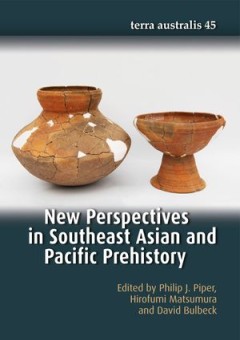
New Perspectives in Southeast Asian and Pacific Prehistory
This volume brings together a diversity of international scholars, unified in the theme of expanding scientific knowledge about humanity’s past in the Asia-Pacific region. The contents in total encompass a deep time range, concerning the origins and dispersals of anatomically modern humans, the lifestyles of Pleistocene and early Holocene Palaeolithic hunter-gatherers, the emergence of Neolit…
- Edition
- -
- ISBN/ISSN
- -
- Collation
- -
- Series Title
- -
- Call Number
- 400 NEW n

New Mana: Transformations of a Classic Concept in Pacific Languages and Cultures
Mana’, a term denoting spiritual power, is found in many Pacific Islands languages. In recent decades, the term has been taken up in New Age movements and online fantasy gaming. In this book, 16 contributors examine mana through ethnographic, linguistic, and historical lenses to understand its transformations in past and present. The authors consider a range of contexts including Indigenous s…
- Edition
- -
- ISBN/ISSN
- 9781760460075
- Collation
- -
- Series Title
- -
- Call Number
- 400 TEN n
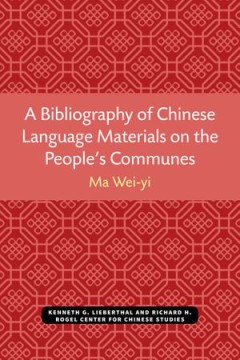
A Bibliography of Chinese Language Materials on the People's Communes
A research tool for scholars studying modern China, particularly those focusing on the post-1949 communal system and economy. The work includes full bibliographic references to some 2,800 essay, articles, pamphlets, and other materials in Chinese taken from more than 130 publications, primarily from mainland. The entries are arranged are arranged topically with annotations. Includes a geographi…
- Edition
- -
- ISBN/ISSN
- 9780472901777
- Collation
- -
- Series Title
- -
- Call Number
- 495.181 MAW b
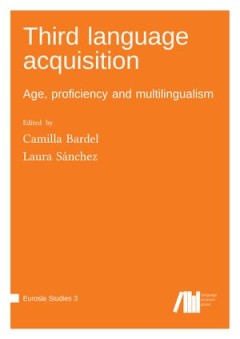
Third language acquisition : Age, proficiency and multilingualism
This book deals with the phenomenon of third language (L3) acquisition. As a research field, L3 acquisition is established as a branch of multilingualism that is concerned with how multilinguals learn additional languages and the role that their multilingual background plays in the process of language learning. The volume points out some current directions in this particular research area with …
- Edition
- -
- ISBN/ISSN
- 978-3-96110-280-8
- Collation
- -
- Series Title
- Eurosla Studies 3
- Call Number
- 401.93 THI

Team Teaching and Team Learning in the Language Classroom : Collaboration for…
This book reignites discussion on the importance of collaboration and innovation in language education. The pivotal difference highlighted in this volume is the concept of team learning through collaborative relationships such as team teaching. It explores ways in which team learning happens in ELT environments and what emerges from these explorations is a more robust concept of team learning i…
- Edition
- -
- ISBN/ISSN
- 9781317513186
- Collation
- -
- Series Title
- Routledge research in language education
- Call Number
- 428.007 1 TEA
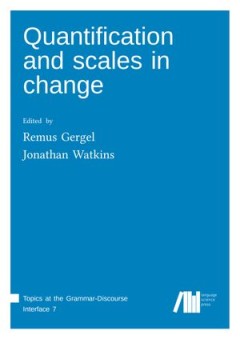
Quantification and scales in change
This volume contains thematic papers on semantic change which emerged from the second edition of Formal Diachronic Semantics held at Saarland University. Its authorship ranges from established scholars in the field of language change to advanced PhD students whose contributions have equally qualified and have been selected after a two-step peer-review process. The key foci are variablity and di…
- Edition
- -
- ISBN/ISSN
- 9783961102655
- Collation
- -
- Series Title
- Topics at the Grammar-Discourse Interface 7
- Call Number
- 401.43 QUA
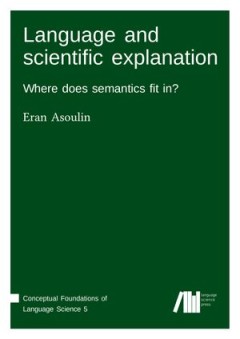
Language and scientific explanation : Where does semantics fit in?
This book discusses the two main construals of the explanatory goals of semantic theories. The first, externalist conception, understands semantic theories in terms of a hermeneutic and interpretive explanatory project. The second, internalist conception, understands semantic theories in terms of the psychological mechanisms in virtue of which meanings are generated. It is argued that a fruitfu…
- Edition
- -
- ISBN/ISSN
- 978-3-96110-263-1
- Collation
- -
- Series Title
- Conceptual Foundations of Language Science 5
- Call Number
- 401.3 ASO l
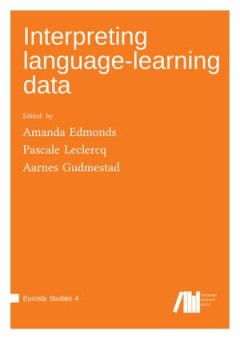
Interpreting language-learning data
This book provides a forum for methodological discussions emanating from researchers engaged in studying how individuals acquire an additional language. Whereas publications in the field of second language acquisition generally report on empirical studies with relatively little space dedicated to questions of method, the current book gave authors the opportunity to more fully develop a discussi…
- Edition
- -
- ISBN/ISSN
- 978-3-96110-282-2
- Collation
- -
- Series Title
- Eurosla Studies 4
- Call Number
- 418.02 INT

Information structure in spoken Japanese : Particles, word order, and intonation
This study explores information structure (IS) within the framework of corpus linguistics and functional linguistics. As a case study, it investigates IS phenomena in spoken Japanese: particles including so-called topic particles, case particles, and zero particles; word order; and intonation. The study discusses how these phenomena are related to cognitive and communicative mechanisms of humans.
- Edition
- -
- ISBN/ISSN
- 978-3-96110-138-2
- Collation
- -
- Series Title
- Topics at the Grammar-Discourse Interface 8
- Call Number
- 495.6 NAK i
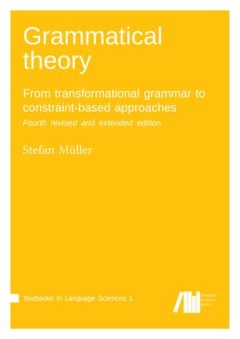
Grammatical theory : From transformational grammar to constraint-based approa…
This book introduces formal grammar theories that play a role in current linguistic theorizing (Phrase Structure Grammar, Transformational Grammar/Government & Binding, Generalized Phrase Structure Grammar, Lexical Functional Grammar, Categorial Grammar, Head-Driven Phrase Structure Grammar, Construction Grammar, Tree Adjoining Grammar). The key assumptions are explained and it is shown how …
- Edition
- Fourth revised and extended edition
- ISBN/ISSN
- -
- Collation
- -
- Series Title
- -
- Call Number
- 415 MUL g
 Computer Science, Information & General Works
Computer Science, Information & General Works  Philosophy & Psychology
Philosophy & Psychology  Religion
Religion  Social Sciences
Social Sciences  Language
Language  Pure Science
Pure Science  Applied Sciences
Applied Sciences  Art & Recreation
Art & Recreation  Literature
Literature  History & Geography
History & Geography